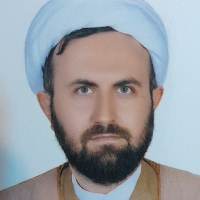Document validation and textual and intertextual analysis of the 27 letter of Nahj al-Balagha
Author(s):
Article Type:
Research/Original Article (دارای رتبه معتبر)
Abstract:
The validation of hadiths has always been one of the methods of hadith studies. In line with its importance, Islamic scholars have been challenged to validate the narrations of Nahj al-Balagheh with regard to the authenticity of its narrations. The unique teachings and eloquent text of Nahj al-Balaghah prevent giving up its hadiths under the pretext of its unauthenticated document. The present article deals with the validation of letter 27 of Nahj al-Balagheh and evaluates two documents of Sheikh Mofid and Muhammad bin Ibrahim Thaqafi, emphasizing the accepted rules of ilm al-Rijal, and elevates letter 27 from an unauthenticated source to a documented and valid text. Then letter 27 was submitted to textual analysis and by interpreting Nahj al-Balagha with Nahj al-Balagha, the the common themes from the sermons, letters and words of wisdom in letter 27 and those in other narrations and statements from Nahj al-Balagha were extracted confirming the issuance of that content by the Imam. Then, by creating a narrative system for the Testament of Muhammad bin Abi Bakr, the text was analyzed intertextually based on other hadith books. The present study uses a descriptive analytical and library-based method and the related software for collecting data, the originality of the text and the attribution of letter 27 to Amirul Momineen was proved and confirmed.
Keywords:
Language:
Persian
Published:
Quarterly Journal of Nahjolbalagha, Volume:11 Issue: 42, 2024
Pages:
47 to 69
https://www.magiran.com/p2723938
سامانه نویسندگان
مقالات دیگری از این نویسنده (گان)
-
A New Perspective on the Meaning of the Phrase "Mā Taqaddama wa mā Taʼakhkhara" in the Second Verse of Surah al-Fatḥ
*, Seif Ali Zahedifar, Seyedmajid Nabavi
Journal of Quran and Religious Enlightenment, Winter and Spring 2025 -
Strategies for an Ideal Lifestyle, both Individually and Socially, as Outlined in Nahj al-Balagh
, Maryam Nobari, *
Journal of Nahjolbalagheh,



